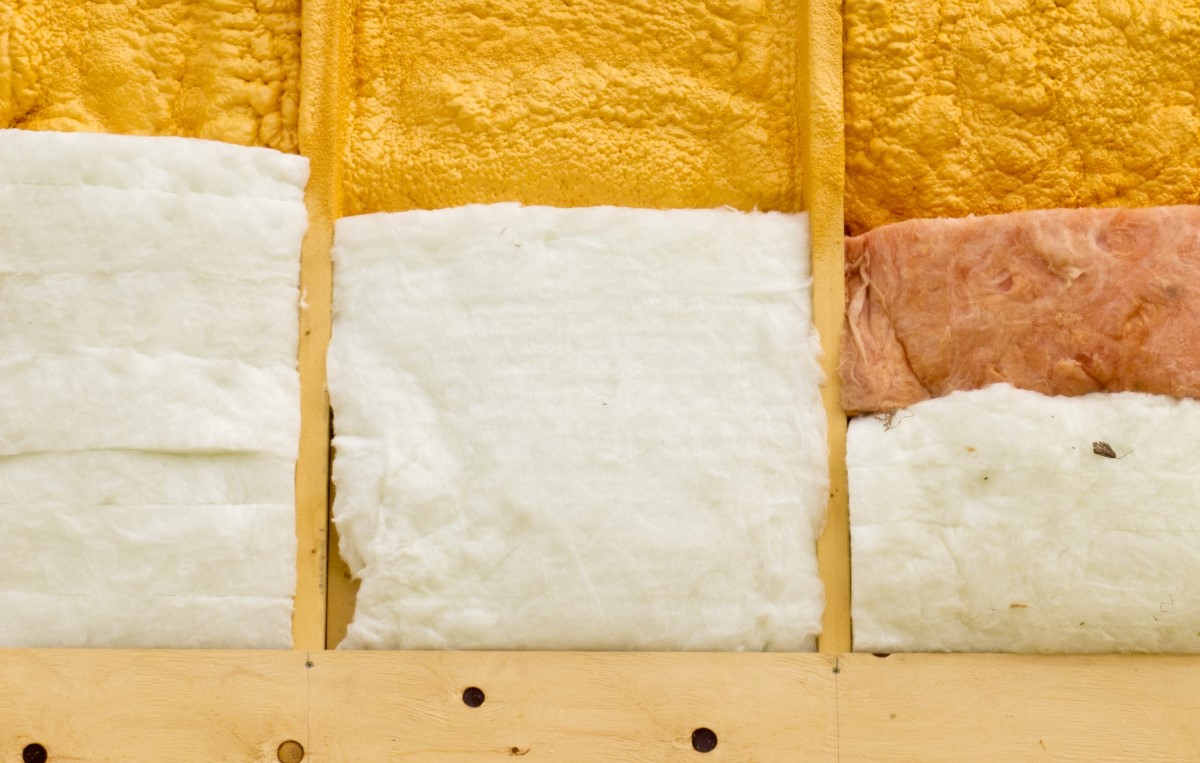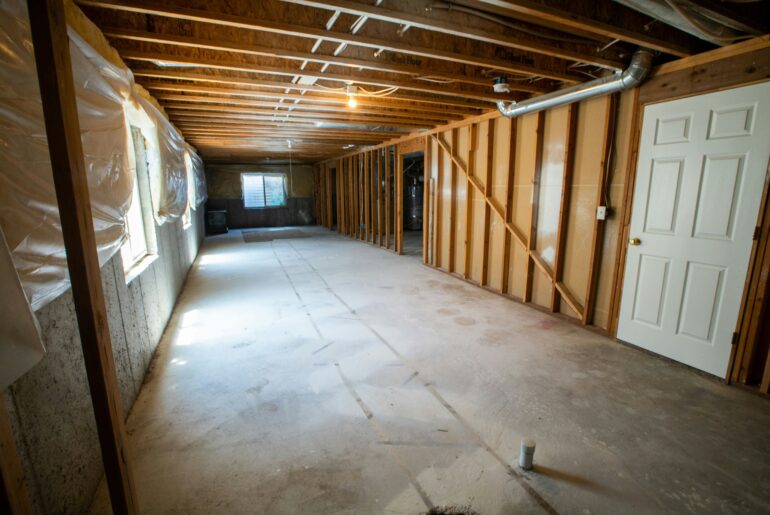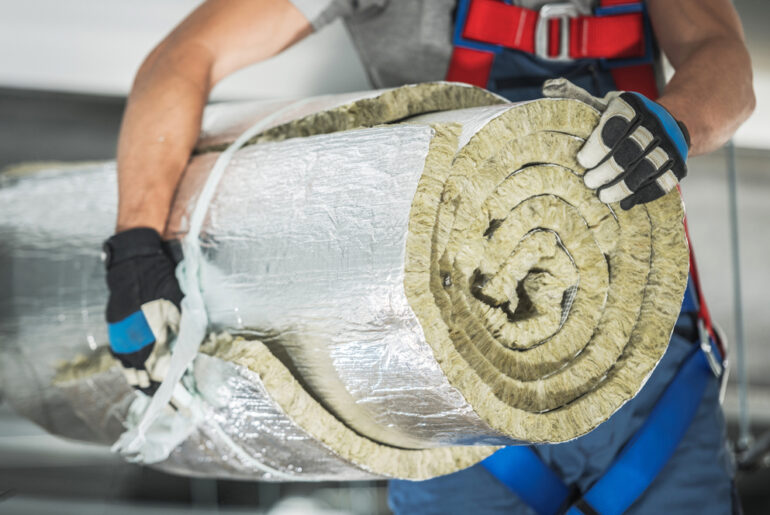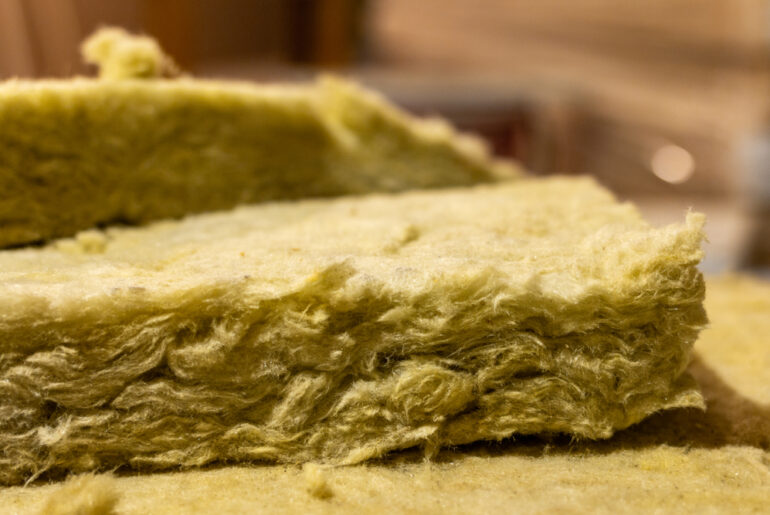Insulation is crucial to keeping your home warm and comfortable without wasting energy. There are dozens of insulating materials in today’s market, each with different properties employed to create an energy-efficient home and increase the quality of the air you breathe. Thus, searching for the right insulating material for your home might be a bit challenging.
Overall, fiberglass insulation is quick, easy to install, and serves as a cheaper source of insulation for your home, which is why it’s such a popular option. Spray foam is more expensive insulation that offers maximum cavity coverage, higher R-value, and better resistance to mold growth.
Now, which material best suits your insulation needs? What are the advantages of one over the other? And which one offers the best value?
You’ll find the answers in this article, as we will compare the two most popular insulation choices, spray foam and fiberglass, by putting them against one another. We’ll also consider important qualities such as R-Value, cost-effectiveness, moisture resistance, and durability.
Fiberglass Insulation: General Overview
Fiberglass insulation is one of the oldest types of insulation available, and it still enjoys widespread use today. Since the Owens Corning Company introduced fiberglass in the 1930s, it has been the first choice for most homes.
Fiberglass is so common that fiber batts, a type of fiberglass insulation, account for over 50% of insulation in single-family homes. Blown fiberglass, another type of fiberglass insulation, can be seen in almost 20% of newly built houses. It shows that at least 50 to 75% of family homes use fiberglass as their primary source of insulation.
As its name implies, fiberglass insulation is made of extremely fine glass fibers and is available as either batts, boards, or loose-fill material.
Most insulation has a small, porous space that allows airflow to go in and out of enough regular air and preserve heat flow. Fiberglass achieved this by using the ring and finely ground glass to help thousands of air pass through and also help conductive and convective heat flow.
Fiberglass Batts
Fiberglass batts are blanket-style insulation that can be cut to shape the wall. Fiberglass Batts are made by spinning molten glass over a conveyor belt. The process is repeated over and over until the batt is thick enough to achieve the desired R-value that can provide sufficient insulation for homes.
After the batt leaves the conveyor belt, it is packed into a protective container and sold to your home.
Blown-In (Loose Fill) Fiberglass
Blow-in or loose-fill fiberglass is another type of fiberglass insulation common in home insulation, especially for attics. Blow-in fiberglass looks like pillow stuffings that get blown into the desired cavity, wall, ceiling, or floor, and then it is covered with a protective layer, which is often a mesh fabric.
It is made from small, plastic fluff or filaments that are strengthened with glass and made into soft fibers. They are very useful in filling spaces that are difficult to reach by hand and help improve your home’s thermal performance.
Fiberglass Boards
Fiberglass board insulation is yet another kind of fiberglass insulation manufactured from inorganic fiberglass. It is made from a thermosetting resin that simplifies making flexible, semi-rigid, or rigid fiberglass boards of varying densities.
Fiberglass boards are versatile and can be used in walls, ceilings, and floors as they blend easily with other structures and well with other wood materials. They are also easy to install as many people have confirmed that it is a DIY project that can be executed easily.
The main qualities of fiberglass insulation are
- Cheap: Fiberglass insulation is cheap to finish. It has saved many families from the exorbitant cost of building other kinds of insulation.
- Easy to install: With this fiberglass, homeowners no longer have to worry about hiring insulation professionals, saving additional costs on the installation.
- Eco-friendly: Fiberglass is made from about 30% recycled material, making it one of the most environmentally friendly insulating materials.
- Fire retardant: Fiberglass is made from fine particles of glass and sand and can withstand temperatures up to 1000 degrees Fahrenheit before melting. It can further be reinforced with fire retarding material to improve its safety level.
Spray Foam Insulation: General Overview
Spray polyurethane foam, popularly called SPF, is a spray-applied plastic chemical widely used to insulate buildings and seal cracks. As an insulation material, it helps to keep the home warm and comfortable in an energy-efficient manner. SPF offers maximum insulation because of its high R-value. It also acts as a barrier and prevents unwanted air leaks from cracks and joints.
SPF is a unique chemical applied on-site; it is installed as it is produced and cannot be kept for future use. The bubbling foam material that comes from the applicator’s nozzle is a result of mixed chemicals reacting immediately.
Rigid foam is quite different from spray foam as they are made of polystyrene, while spray foam is often made of the combination of two or more chemicals like polyurethane or polyisocyanurate. During application, rigid foam is applied wet and expands to a bigger foam size while spray foam contracts to be solid.
Spray foam’s prominent qualities are
- Tight seal: Spray foam guarantees a home free of leaks as any cavity or crack is filled up easily
- Adjustable R-value: It has a decent lifespan and a high R-value that can be adjusted for different areas of the house to meet your insulation needs.
- Longevity: Spray foam lasts longer than other kinds of insulation and does not need to be replaced every time.
Spray Foam vs Fiberglass: Installation
Spray Foam requires the services of a professional to install correctly. The professional is geared with all the necessary devices, safety equipment, and chemicals to install the chemical foam in your basement. Fiberglass can be installed by anyone in their house as long as you strictly follow the DIY procedures that you can learn through YouTube or a call with an experienced installer.
Summary: Fiberglass is easier to install.
Spray Foam vs Fiberglass: R-Value
There are three kinds of spray foam insulation: high-density, middle-density, and low-density. A high-density SPF is about 3 lbs/cubic ft., it offers at least an R-Value of 5.5 per inch, and is mostly used for your home exterior and roofing.
Medium density is about 2 lbs./cubic ft and offers an R-value of 5.6 – 5.8 per inch. They are used for continuous insulation and interior cavity walls, while low density offers a 3.6 R-value per inch and is used primarily for buses and filling internal wall cavities.
To increase the R-value of your home, many people double or triple the fiberglass batts or buy batts with better thickness. A 3 1/2 inch batt can provide an R-value of 11, while a 12-inch thick batt provides an R-value of 38. However, the common batt insulation offers an R-value of 2 to 4 per inch.
Summary: Spray foam is a more effective insulation material than fiberglass.
Spray Foam vs Fiberglass: Costs.
Spray foam insulation costs between $1,284 and $3,741. To homeowners who want it professionally installed, you should prepare a commercial budget of a national average of $2,492. Spray foam insulation charges are deducted by the costs per board foot, which are $0.40 to $0.68 for open-cell insulation and $0.76 to $4.00 for closed-cell insulation.
However, the average cost to install fiberglass insulation starts at $0.88 to $1.64 per square foot. Homeowners are expected to pay between $300 and $800 for a 500-square-foot section of their home. Sometimes, these figures may or may not include payment for workmanship, transportation to deliver the materials, and additional increments due to their space.
Short Summary: Spray Foam insulation is more expensive than fiberglass insulation.
Spray Foam vs. Fiberglass: Safety
Spray foam is not entirely safe as the chemicals can be hazardous to your health if care is not taken. The EPA states that residents or occupants should stay away from their building for at least 24 to 72 before use.
For fiberglass, there is most definitely a similarity in the risks they offer. While contact with fiberglass does not have long-term risks, it can cause rashes, itchiness in the eyes, coughing, etc. Although fiberglass is not a carcinogen for humans, it traps air and can worsen allergy attacks and other long-term effects on people with underlying health problems.
Short Summary: Yes, fiberglass is safer than spray foam. Although they both offer considerable risks, fiberglass does not cause severe chemical reactions.
Spray Foam vs Fiberglass: Fire Resistance
Neither insulation type is fireproof. The spray foam itself is not fire resistant as it can easily catch fire, but the materials made from certain chemical components make it slow to burn.
The earlier types of fiberglass are not resistant as they are easily flammable and will aid fire hazards in the home. Fiberglass is now made from recycled glass and sand, which are natural fire retardants that pose little to no fire hazard. Fiberglass is further treated with fire-retardants to increase its resistance to fire.
Short Summary: Fiberglass resists fire better than spray foam.
Spray Foam vs Fiberglass: Common Applications
Spray foam can be applied anywhere in the home. They fill gaps in joints, seams, cracks, and other small openings.
Fiberglass can be used to fill loose-fill material in attics. Fiberglass can be used to insulate flat surfaces such as cavity wall insulation, ceiling tiles, curtain walls, and ducting and is also used for insulating piping and soundproofing.
Spray Foam is the best insulation for the basement as it limits air and moisture intrusion. Fiberglass is most common in most American homes, especially single-parent homes, thanks to its affordability and effectiveness. Spray foams are common in places with harsher winters as it offers better insulation per inch.
Basement
Spray Foam is a better choice for basements because of its ability to fill out cracks and leaks.
Attic
Spray Foam is the best insulation for the attic as it traps enough warmth for the entire house.
Garage
Fiberglass is the best insulation for the garage as it is inexpensive and provides the needed insulation for the Garage.
Pole Barn
Fiberglass insulation wins as the perfect insulation material for pole barn. Many suggest the cheap cost of the material makes it a preferred material for pole barns.
Metal Building
Spray foam is the best insulation for metal buildings because spray foams merge or fare better with metals than Fiberglass insulation.
Around Windows
Fiberglass is the needed reinforcement for a window; therefore, it wins the comparison.
Short Summary: Both insulators offer unique properties that can be used in certain places and conditions. They are equally matched in this comparison, but spray foam offers more utility.
Spray Foam vs Fiberglass: Unique Benefits
A properly deployed spray foam insulation protects against moisture and reduces the chance of harmful mold, mildew, and rotting of wood in your home. In the United States, homes treated with spray foam insulation qualify for state and federal tax deductions, allowing homeowners to earn while their home is protected.
Fiberglass is known for its aesthetics and offers optimal thermal protection over time. Fiberglass is one of the few insulating materials that can be self-installed by homeowners. It is also fire retardant and is largely safe to use.
While insulating materials generally do not have an inherent STC value, they can help increase the STC value of walls significantly. An STC value is indicated for the system, not the components of a system.
Fiberglass, for example, can increase STC rating by 4-10 points; that is, a wall with 33 points can be increased to about 39. While spray foam can bring the value up to 35 points, which is enough to make loud speech sounds faint and unintelligent.
Short Summary: Spray foam has better unique properties than Fiberglass. But fiberglass slightly edges it in STC rating.
Which Is Better, Spray Foam Or Fiberglass?
We have conclusively compared the two materials; their similarities and unique differences are pretty clear.
Fiberglass is the best choice for homeowners looking for a pocket-friendly option that still gives real value. It is easy to install, fire retardant, and eco-friendly. Spray foam, on the other hand, is more energy efficient and is resistant to mold and mildew growth.
All in all, the best type will depend on your budget and the feature that are more important to you.
| Fiberglass | Spray Foam | |
| Insulation weight | Weighs more | Weighs less |
| Sound control | Great sound control | Good sound control |
| Fire resistance | Fire resistant | Combustible to a certain degree |
| Unique properties | Little unique properties | Numerous unique properties |
| Typically used in: | Holes and air leakages in the home’s interior and exterior | Cracks, and cavities, in residential and commercial places |
| Insulating Facing & Moisture Control | Good insulating facing & moisture control | Excellent insulating facing & moisture control |
Sources:
U.S. Department of Energy, energy.gov
Wall And Ceiling Bureau (WCB), wallandceilingbureau.org
Bob Vila Blog, bobvila.com





